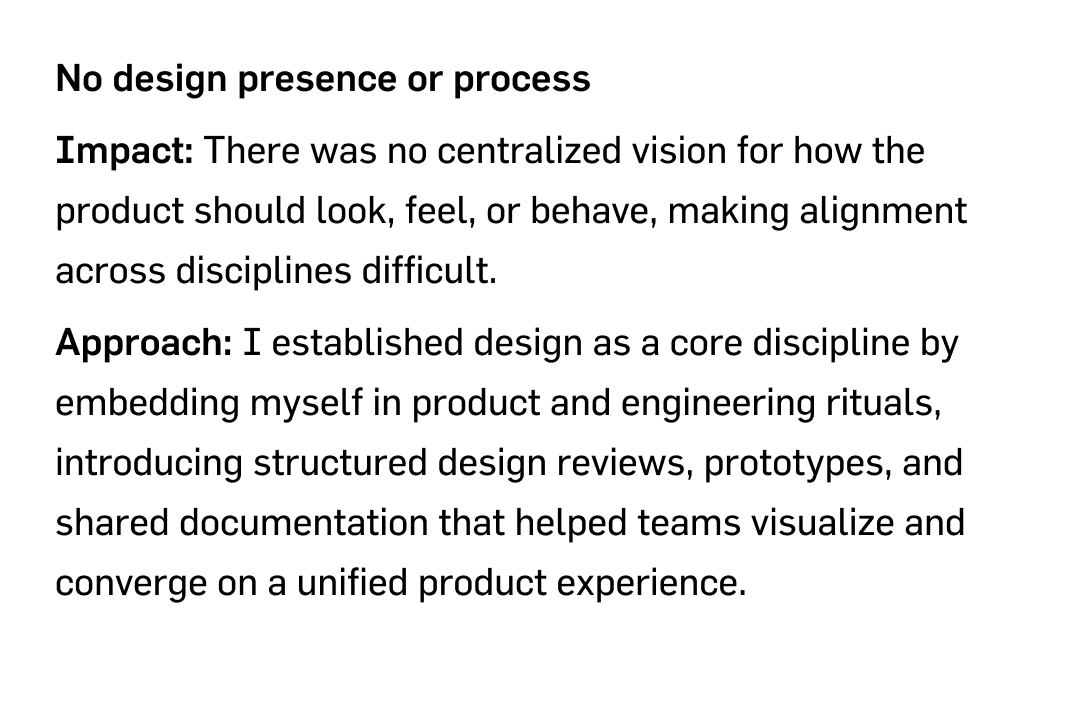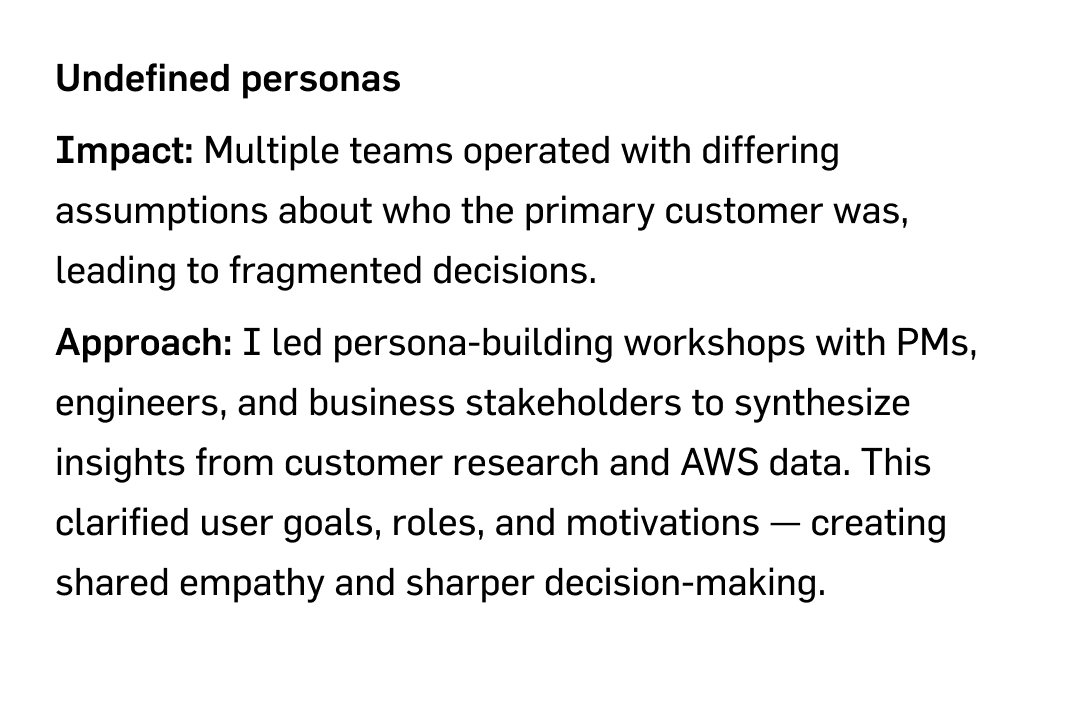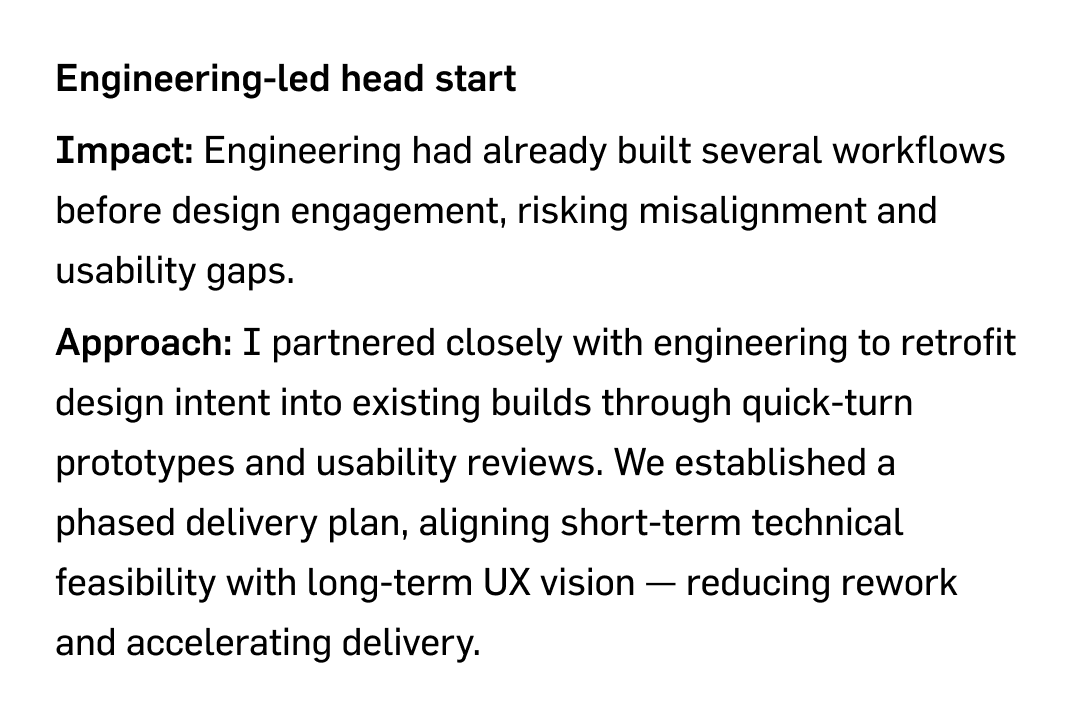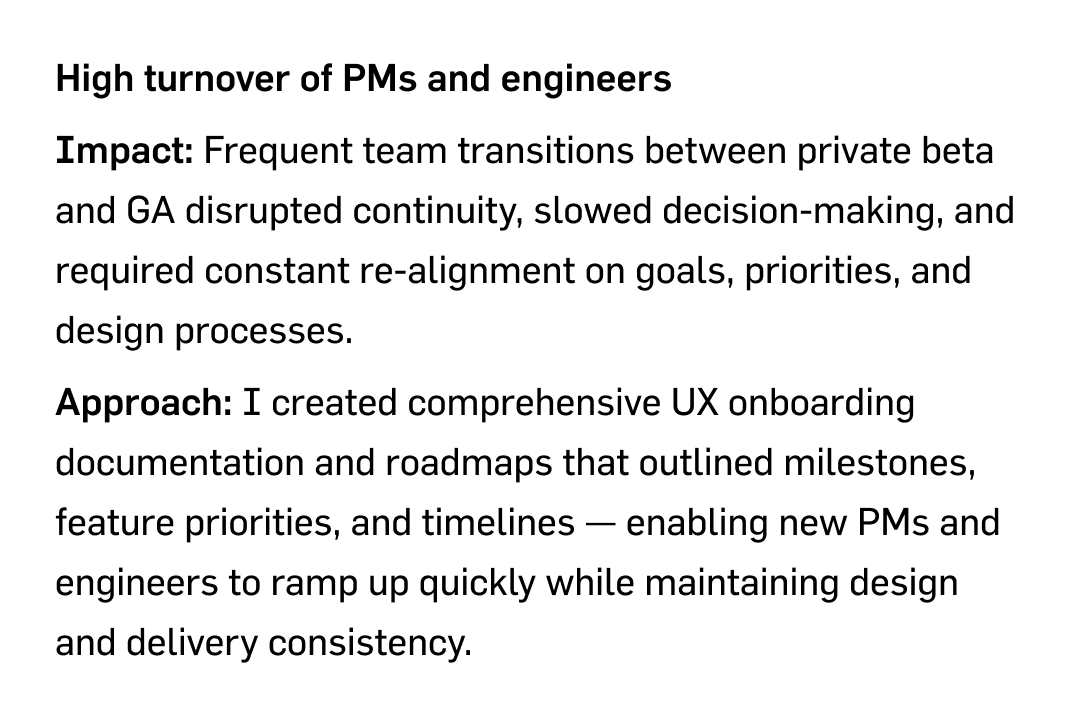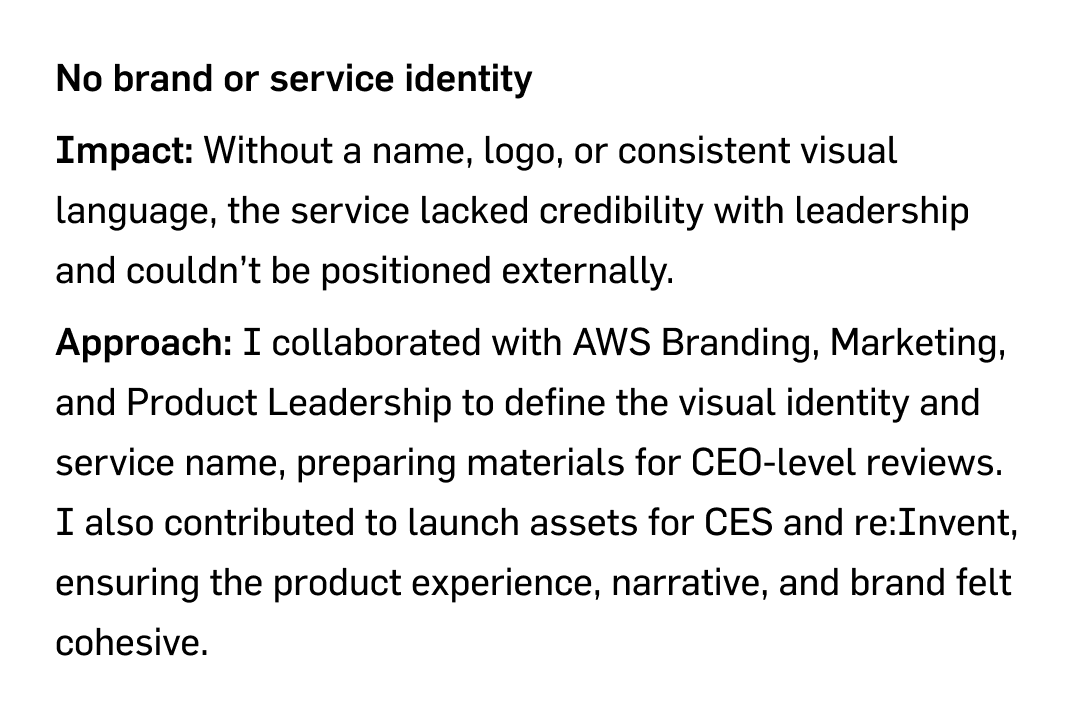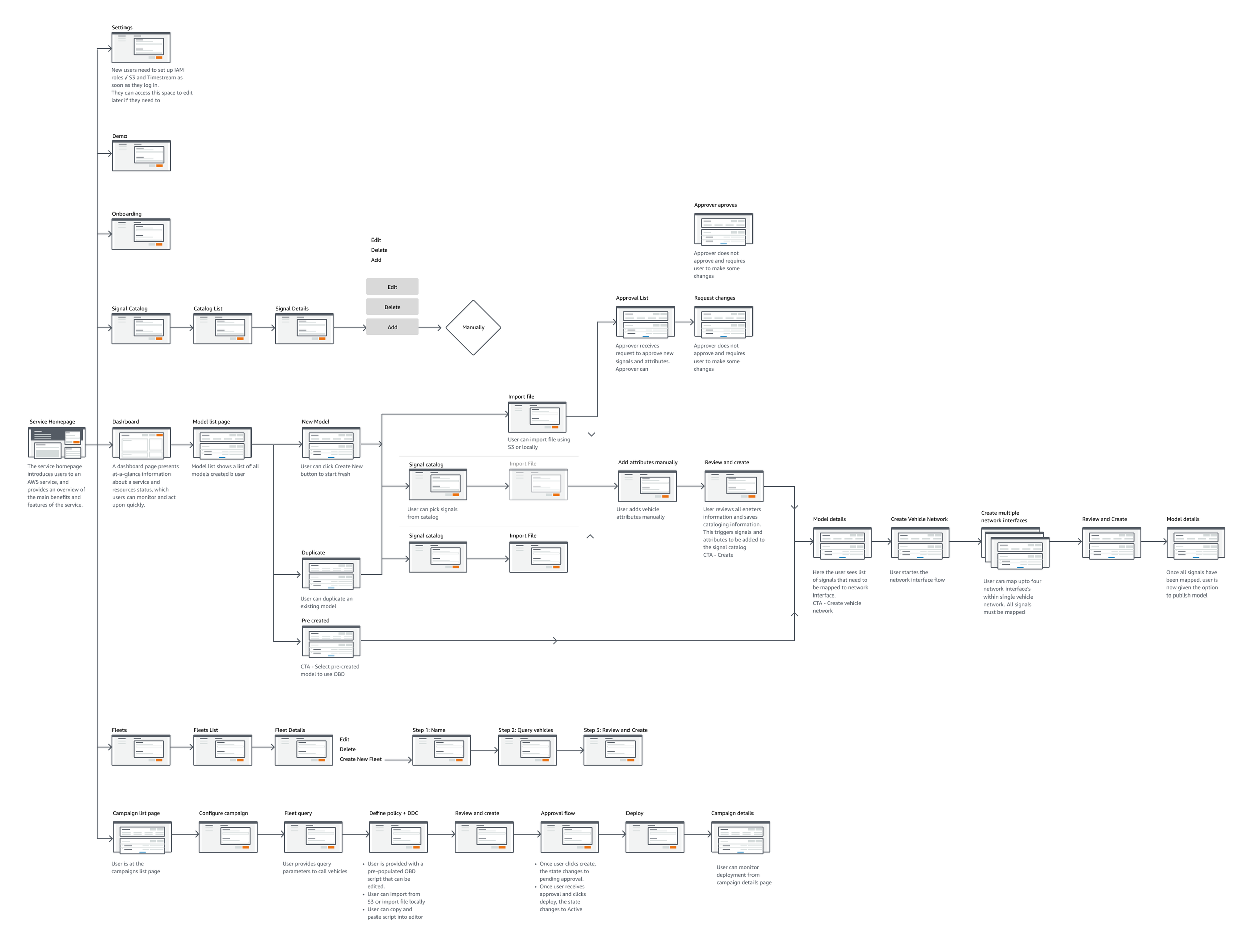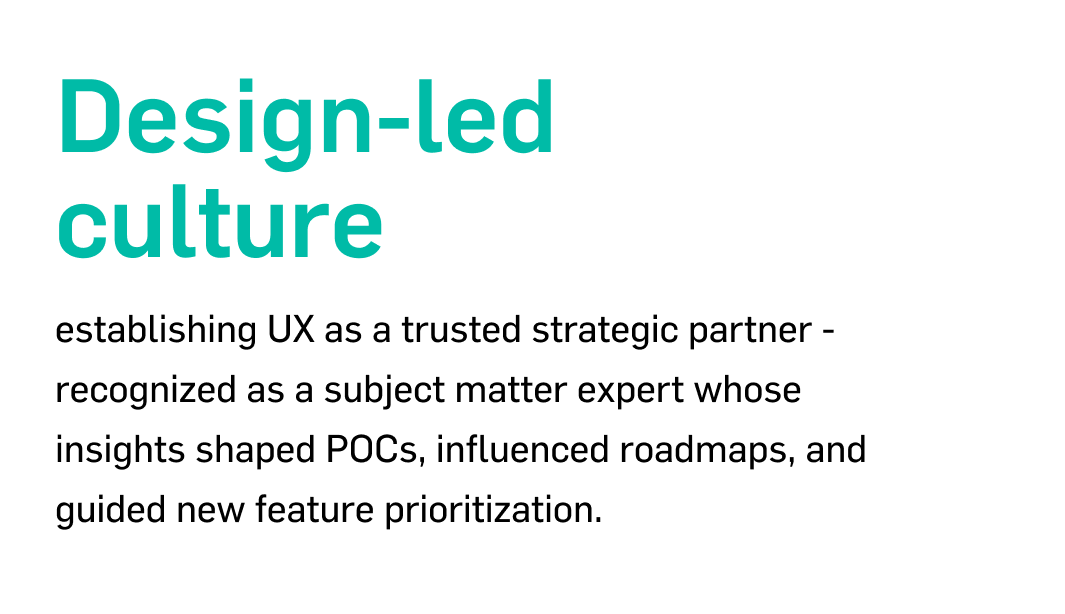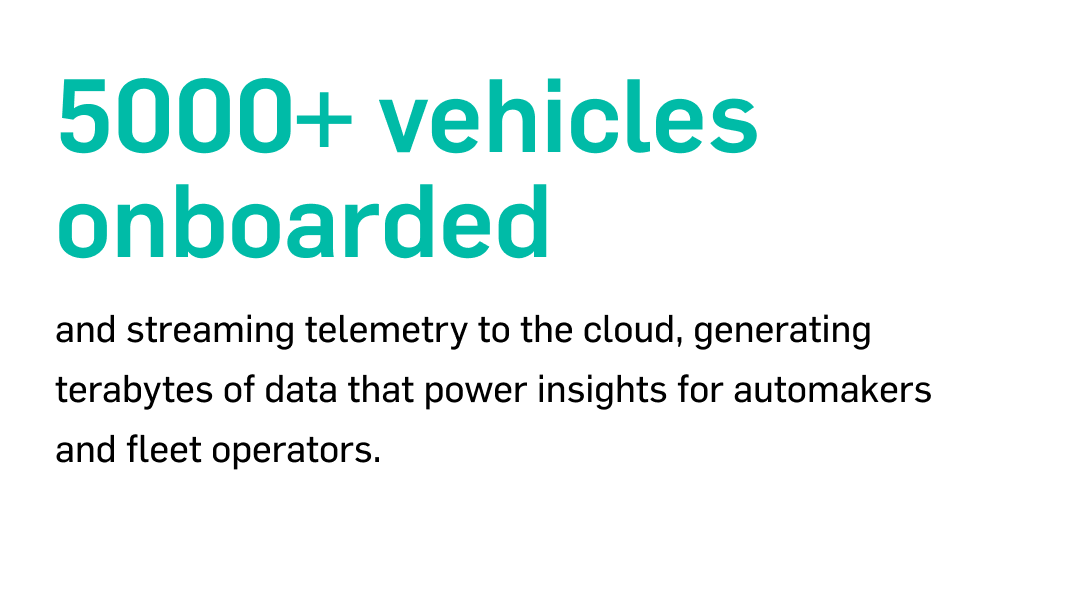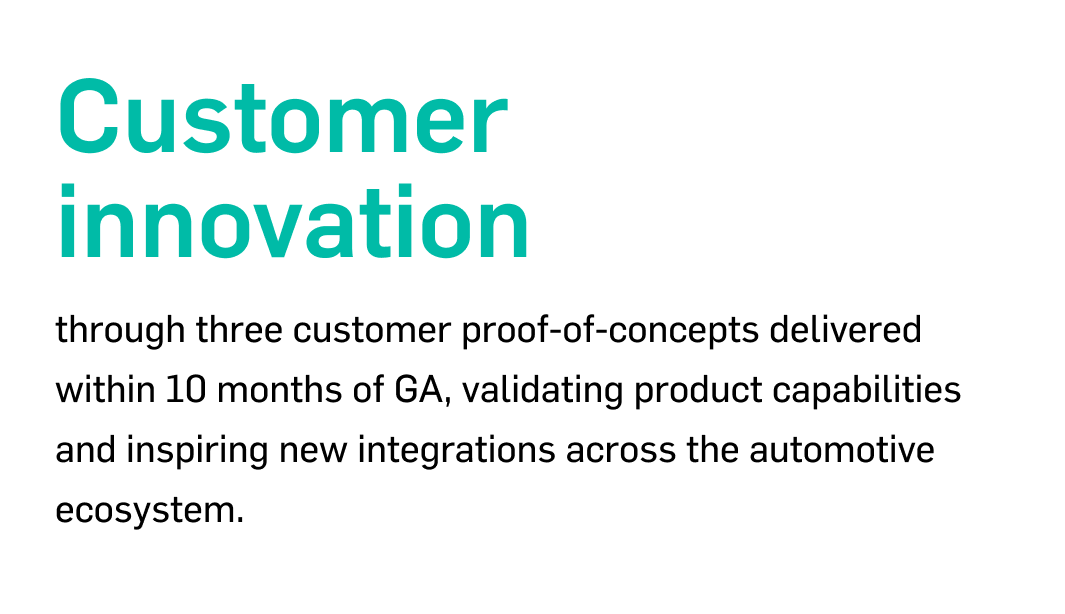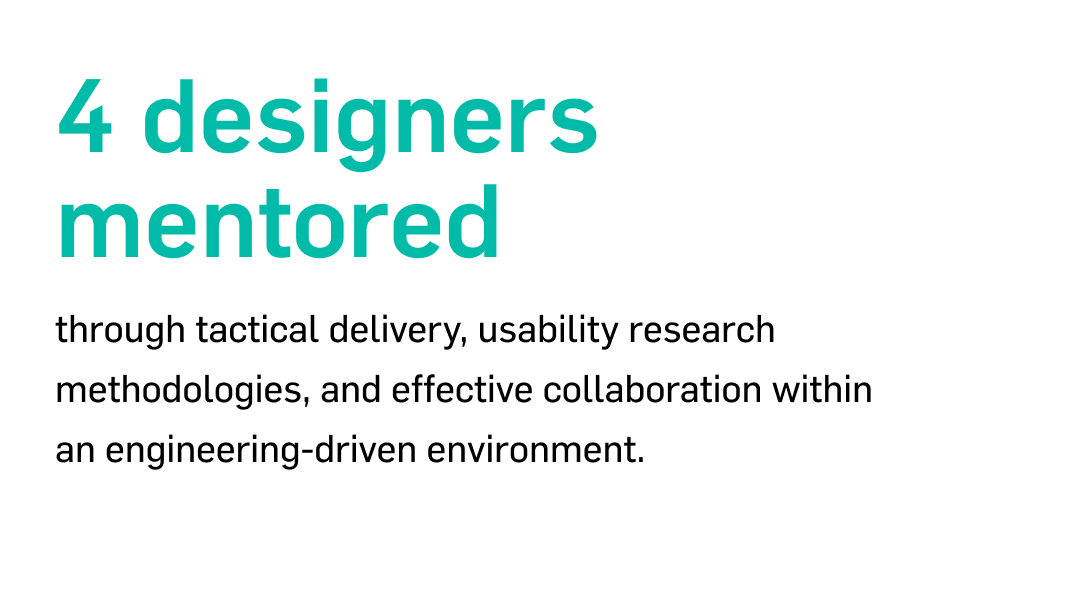AWS IoT Fleetwise: Concept to Global Launch
Designing from day zero-turning vision into a shippable product at AWS
Due to confidentiality, full project details and visuals are not publicly shared. Connect with me directly to learn more about this case study.

What is the context?
Company
Amazon Web Services (AWS)
Team structure
Product + engineering + solution architects + go to market specialists, legal. No prior design discipline.
Service
AWS IoT FleetWise — a service enabling automakers to collect, standardize, and transfer vehicle data to the cloud.
My role
Founding Product Designer
leading the delivery of AWS’s very first IoT solution
Timeline
Joined early 2021 → GA in Oct 2022
<1 year from concept to private preview.
UX impact summary:
Concept → private beta → AWS Reinvent and CES launch → GA.
High visibility AWS launch (executive reviews up to CEO level).
Why is this problem business critical?
Industry Challenges and the Need for a solution
Modern vehicles generate massive amounts of data (from sensors, cameras, and onboard systems) but automakers struggle to use that data effectively. As the automotive industry moves toward software-defined and increasingly autonomous vehicles, the scale and complexity of data collection have exploded, exposing deep technical and operational gaps. Three core challenges emerged:
Data Fragmentation
Each vehicle model produces thousands of proprietary signals (e.g., GPS, speed, fuel efficiency), making it nearly impossible for manufacturers to standardize or compare data across fleets. This fragmentation prevents unified insights and slows down innovation.
Data Tsunami
Advanced vehicles, especially those approaching Level 3 autonomy, generate enormous volumes of sensor data (camera, radar, LiDAR). Continuously transferring this raw data to the cloud is not only cost-prohibitive but also unsustainable at scale.
Data Delays
Without timely access to operational data, automakers often discover quality or performance issues too late — leading to expensive recalls, reactive diagnostics, and missed opportunities for predictive maintenance.
These challenges created an urgent need for a scalable, cloud-based solution that could collect, standardize, and intelligently filter vehicle data at the edge before transmission — enabling automakers to extract value faster, lower operational costs, and accelerate their path toward connected and autonomous mobility.
This is where AWS IoT FleetWise was conceived: to give automotive engineers, data scientists, and fleet operators a unified, intelligent way to manage vehicle data pipelines — from the car to the cloud — and unlock real-time, data-driven decision-making at scale.
UX Challenges, impact and approach
From Ambiguity to Alignment
Navigating ambiguity required more than design — it meant uncovering real customer and industry needs, then uniting cross-functional teams around a shared vision. I grounded decisions in real-world insight by connecting customer pain points, industry practices, and technical realities. This approach helped turn uncertainty into actionable direction and laid the foundation for a user-centered, technically feasible design strategy.
Comprehensive Research & Discovery
Conducted in-depth conversations with 10+ AWS Solution Architects who serve as the voice of the customer, uncovering user needs and technical challenges specific to the problems AWS IoT FleetWise aimed to solve.
Interviewed 8+ Amazon employees with prior automotive and mobility industry experience to understand real-world practices, workflows, and the day-to-day challenges engineers face — from startups to Fortune 500 automakers.
Led rapid prototyping and concept validation sessions to quickly test assumptions, refine workflows, and align product direction with actual customer expectations.
The insights from research made it clear that while the team had deep technical expertise, there was still misalignment on who we were building for and what success looked like from a customer perspective. To translate these insights into action, I led four focused workshops with core team members and leadership to realign execution around the end-to-end customer experience.
I brought together 20+ embedded and cloud engineers, product managers, go-to-market strategists, and our general manager to participate in a series of foundational, co-creation sessions. Through collaborative activities like journey mapping and persona alignment, we stepped back from execution to refocus on the fundamentals — why this solution matters, who our customers are, and what problems we are truly solving.
What actions were taken by UX?
Design artifacts used to align leadership
The workshops became a turning point — transforming fragmented perspectives into a shared product vision. By creating space for collaboration, we replaced assumptions with clarity and turned research findings into actionable direction. These sessions not only aligned the team on who we were building for but also set the foundation for a focused, executable roadmap.
Key Breakthroughs and Insights That Transformed the Product and UX Direction
Refocused on our primary user: UX identified and validated our core customer, using their needs to guide decision-making, prioritize requirements, and design a cohesive end-to-end experience.
Defined five Tier-1 features: The team aligned on a focused set of core features that worked together to simplify the process of collecting, standardizing, and analyzing vehicle data at scale.
Established a unified execution strategy: Cross-functional alignment between design, product, and engineering enabled faster decisions, consistent implementation, and a clear path to launch.
What was the final outcome?
Launch initiatives
Fleetwise team at CES 2023 and 2024
Watch data collected by fleetwise being used in real time simulation
Fleetwise marketing video at launch


